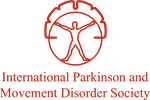 VOLUME 28, ISSUE 2 • JUNE 2024. Full issue »
VOLUME 28, ISSUE 2 • JUNE 2024. Full issue »

Improving access to Parkinson’s medications in underserved regions of Ethiopia
Ethiopia, the second most populous nation in Africa, is home to 120 million people. Due to recent economic growth and improved health care coverage, the average life expectancy of Ethiopians significantly increased in recent years to 67.4 years (1). The aging population together with rapid population growth will drive the epidemiologic transition from poverty-related infectious disease and malnutrition to aging-related neurodegenerative disorders such as Parkinson’s disease (PD).
While the exact prevalence of PD in Ethiopia is not well documented, a recent review estimated the prevalence of PD in sub-Saharan Africa (SSA) ranges from 7/100,000 in Ethiopia to 67/100,000 in Nigeria (2). The authors acknowledge the low prevalence of PD in the region could be due to several factors, including underdiagnosis of PD cases, as they are mostly attributed to “normal aging.” Unpublished data from a local patient support group — Parkinson’s Patient Support Organization-Ethiopia (PPSO-E) — showed that there are more than 1,500 PD patients registered with them, and the majority of them are either from the capital city or regional capitals where they have a relatively better knowledge and resources to seek medical care with a neurologist.
Access to essential medication for managing PD is severely limited in underserved regions of Ethiopia. One of the primary challenges is limited healthcare infrastructure, including ill-equipped health centers and pharmacies in remote and rural areas. This deficiency, together with shortage of skilled healthcare professionals, makes it difficult for individuals living with PD to access proper diagnosis, timely treatment, and ongoing care. Besides, the pharmaceutical supply chain faces several challenges, including insufficient distribution networks, inadequate storage facilities, and regulatory barriers.
Although the revised Ethiopian Essential Medicines list included Levodopa-Carbidopa as a mainstay of treatment for PD, the availability of such vital medication is often inconsistent throughout the country. This scarcity is further exacerbated by the high cost of such medications, which poses a significant financial burden for many individuals and families, particularly those living in poverty. A 2021 continental survey from 28 African countries showed that Levodopa-based oral preparations were available only in 46.4% (or 13) countries, with variable affordability and limited or no insurance coverage in more than half of those countries (3). As a result, access to essential PD medications is limited, and patients may resort to alternative, inefficient, or unsafe treatment due to affordability issues.
Addressing the challenges of delivering Parkinson's medications to underserved parts of Ethiopia requires a multifaceted approach, involving healthcare infrastructure development, capacity building, and innovative strategies for medication distribution and affordability. |
|
In summary, delivering Parkinson's medications to underserved and remote parts of Ethiopia presents significant challenges related to accessibility, availability, and affordability. However, with a concerted effort involving government agencies, healthcare providers, non-profit organizations, and the private sector, it is possible to overcome these challenges and improve access to essential PD treatment for those in need. By investing in healthcare infrastructure, capacity building, medication supply chain optimization, and affordability initiatives, Ethiopia can take meaningful steps towards ensuring that all individuals living with Parkinson's disease receive the care and support they deserve.
References
- HelpAge International. Vulnerability of Older People in Ethiopia: The Case of Oromia, Amhara and SNNP Regional States. Addis Ababa: HelpAge International (2013), p. 1–84.
- Parkinson’s Disease in Sub-Saharan Africa: A Review of Epidemiology, Genetics and Access to Care. 2020
- Hamid, Eman et al. “Availability of Therapies and Services for Parkinson's Disease in Africa: A Continent-Wide Survey.” Movement disorders: official journal of the Movement Disorder Society vol. 36,10 (2021): 2393-2407.
Read more Moving Along:






